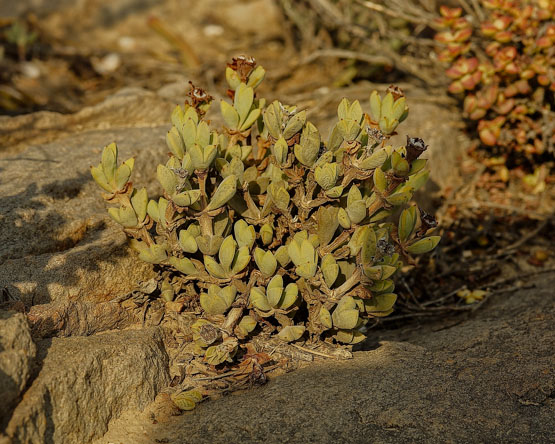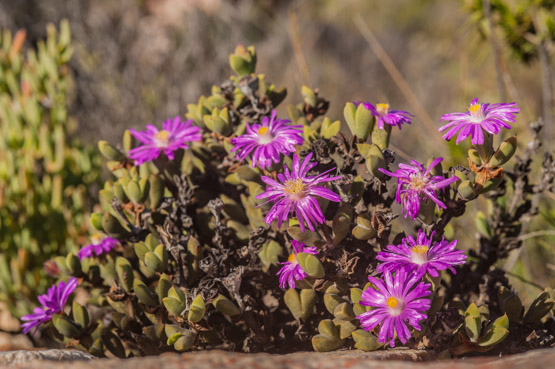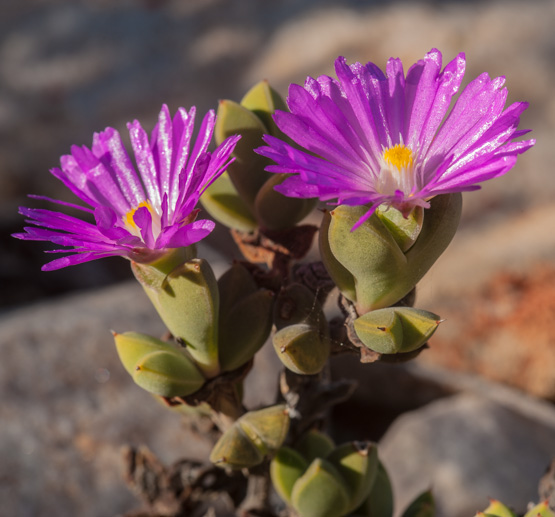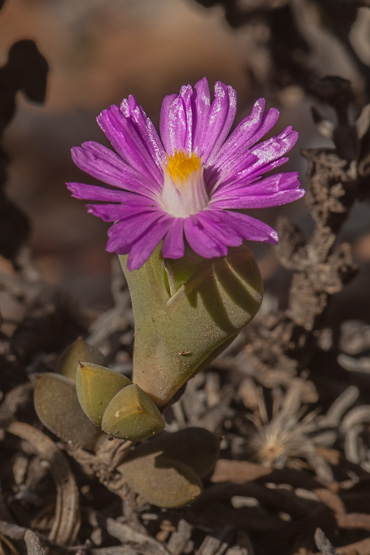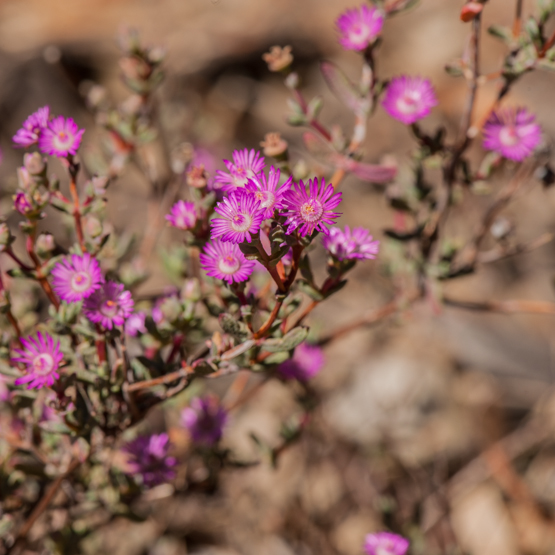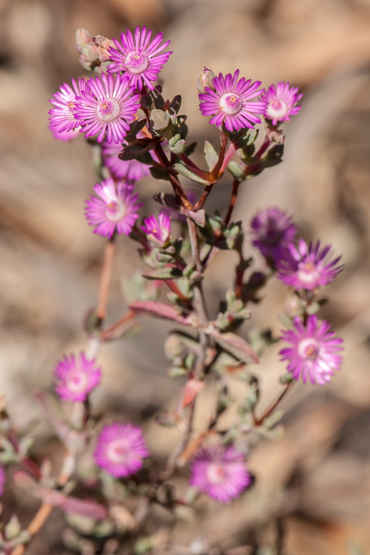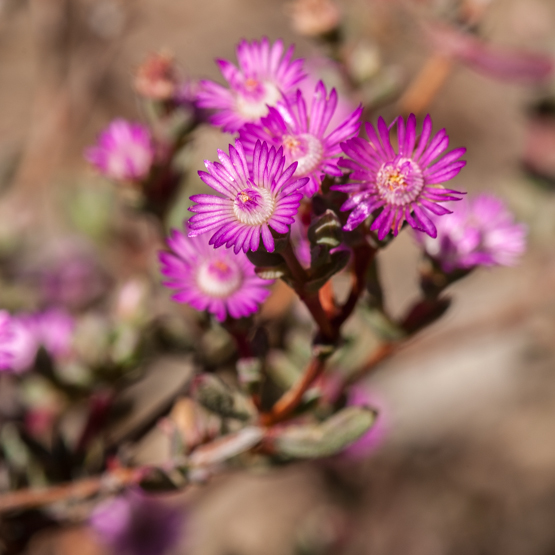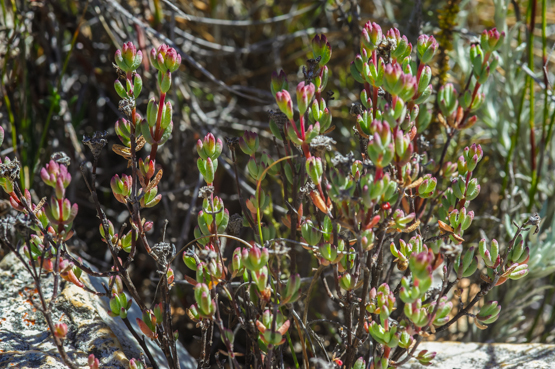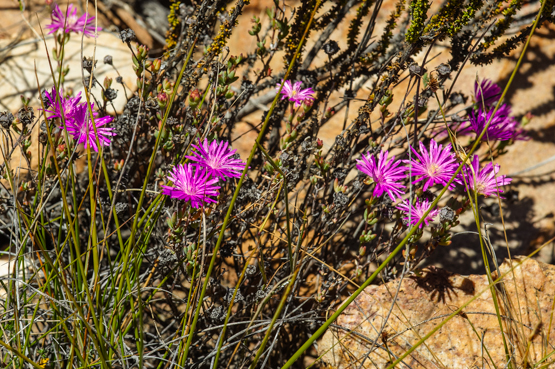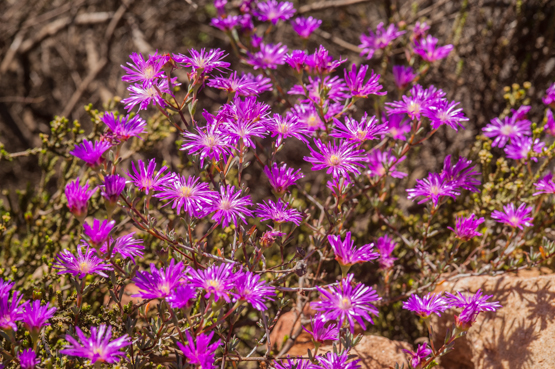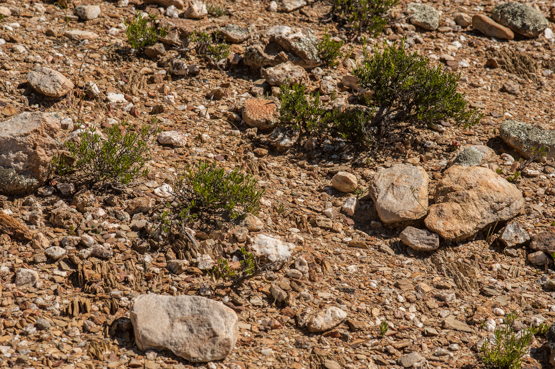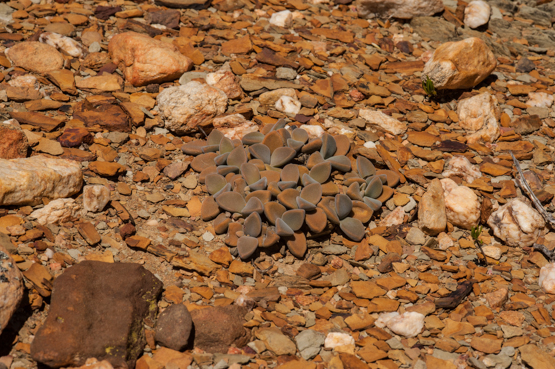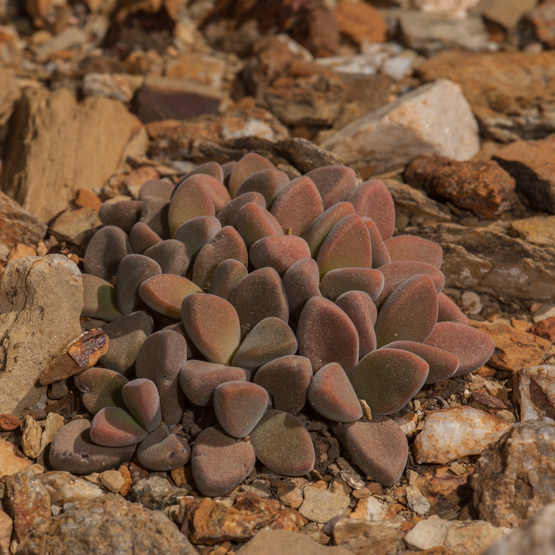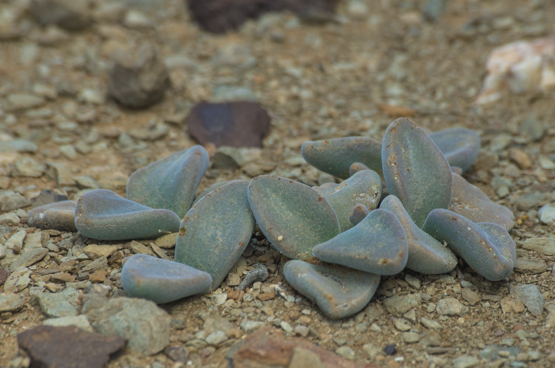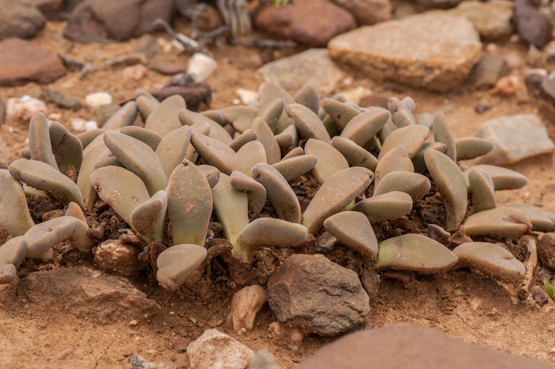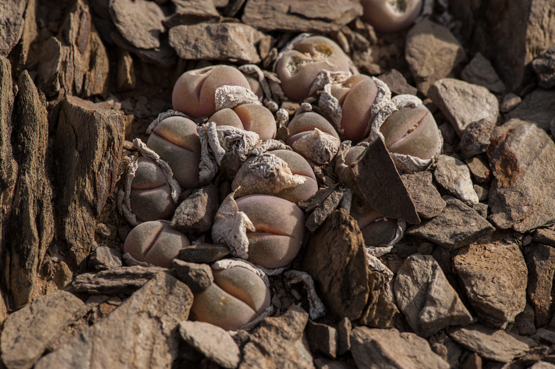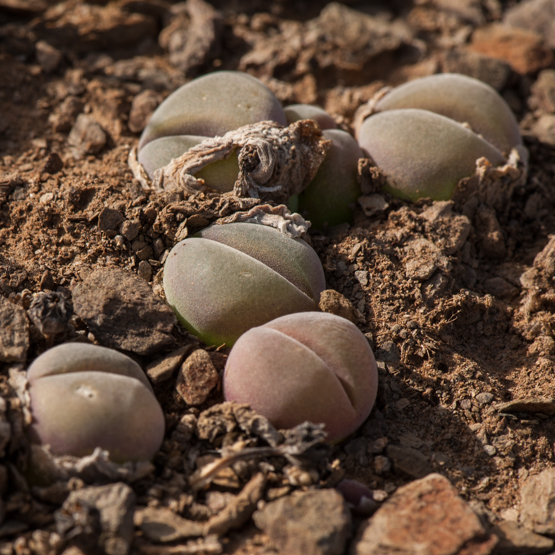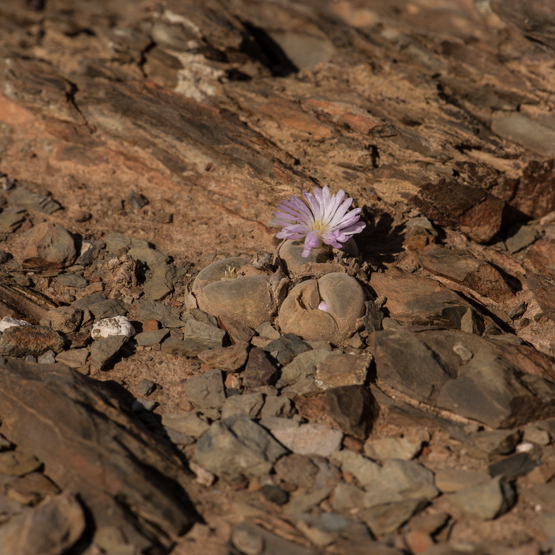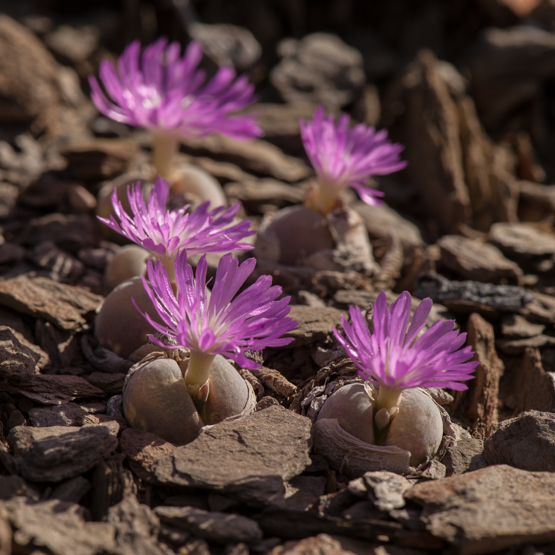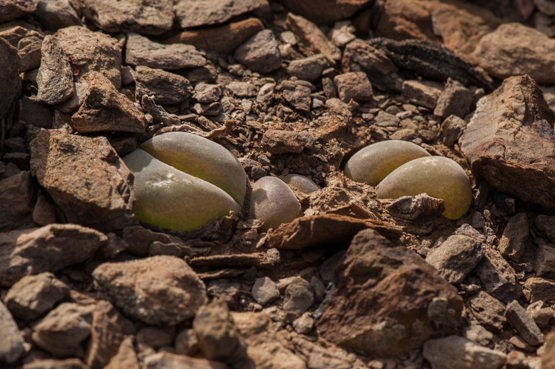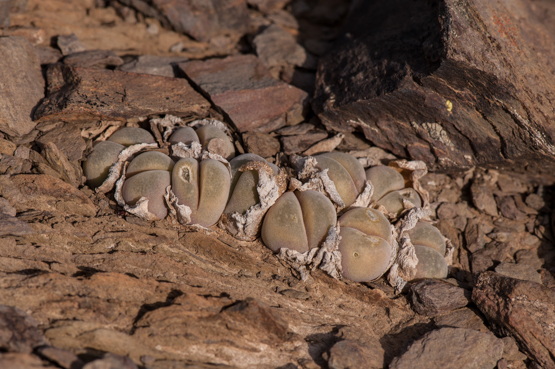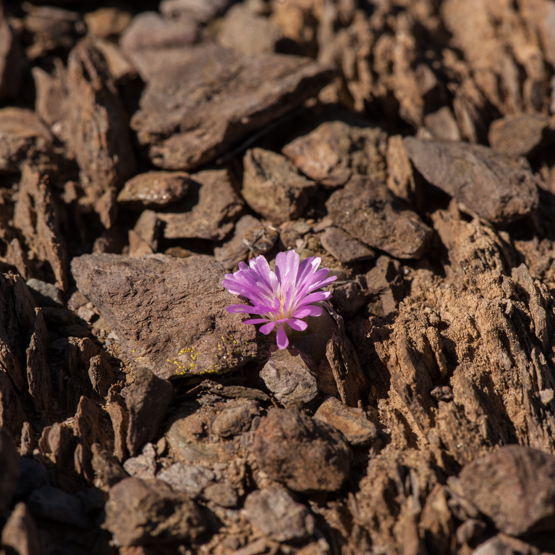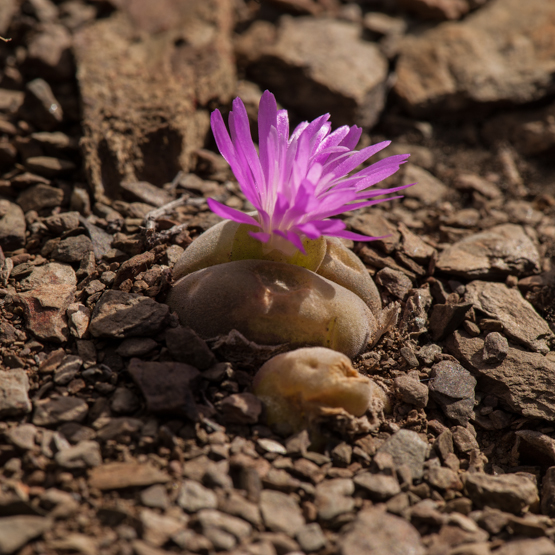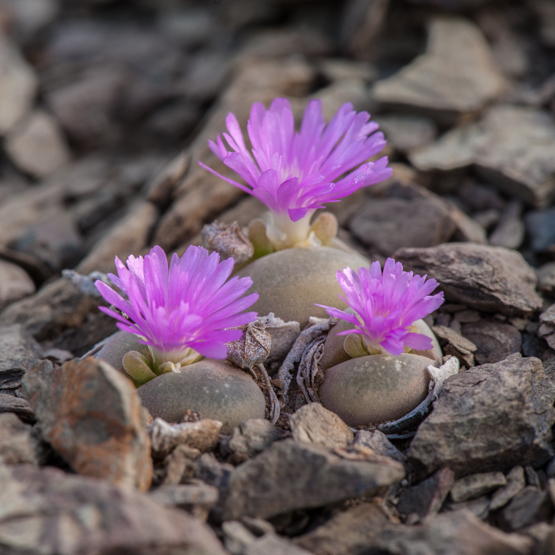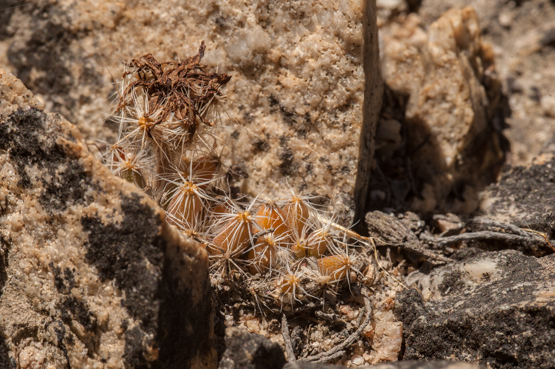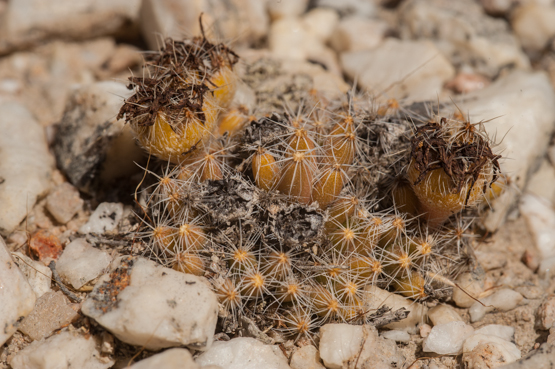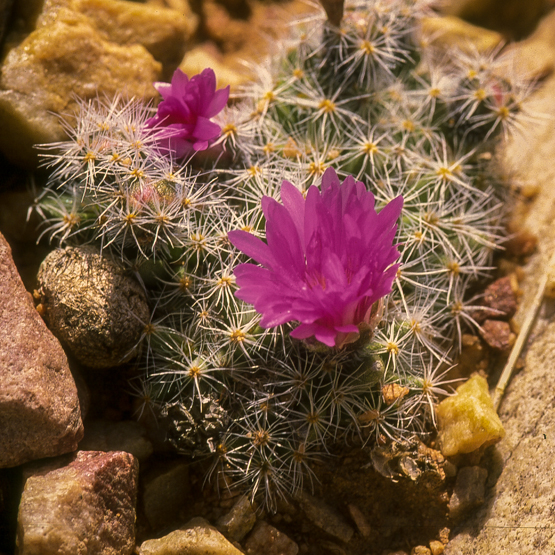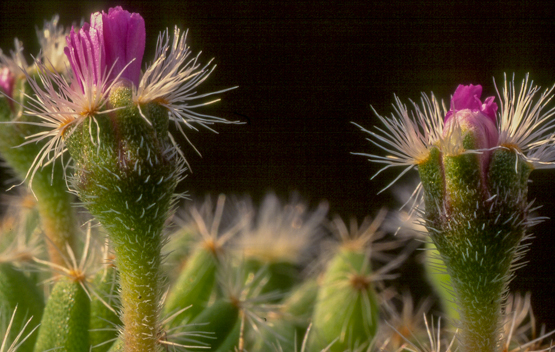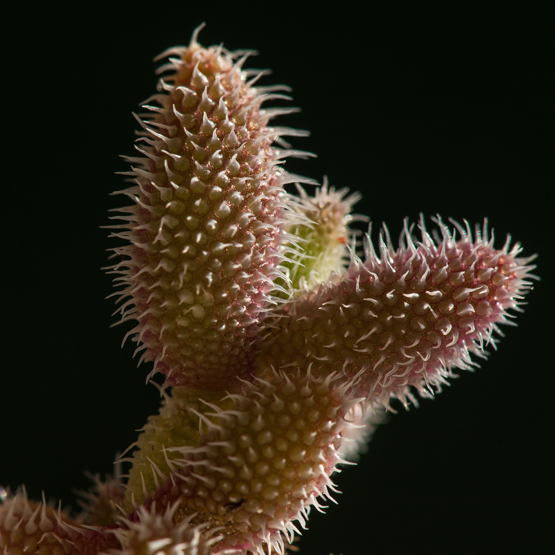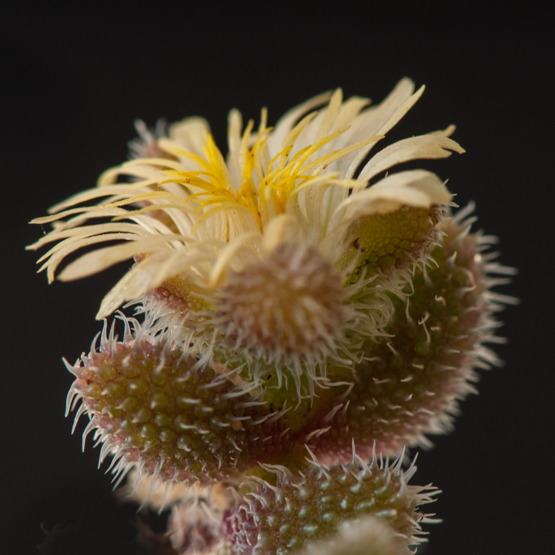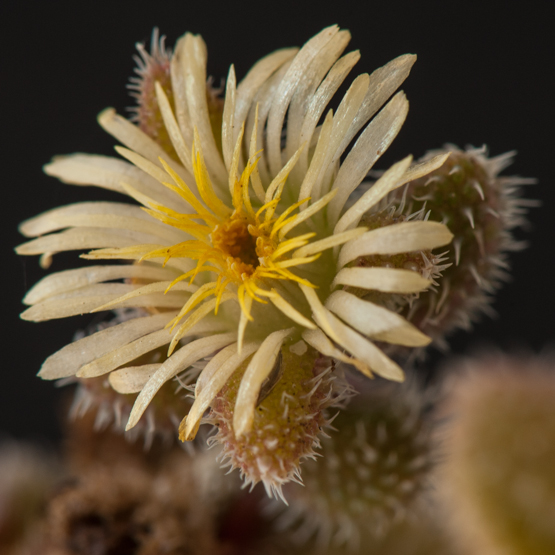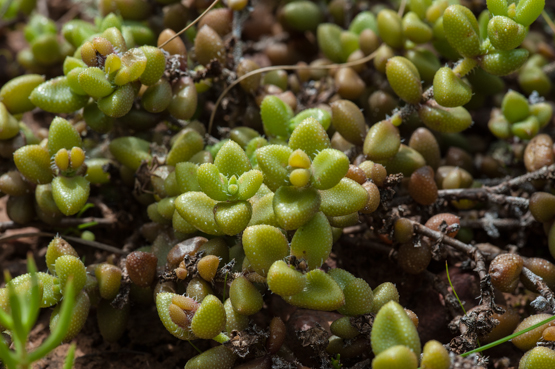With only five species, Braunsia is one of the smaller genera in the family Aizoaceae.
B. apiculata can be distinguished by its velvety leaves with a recurved, dark, sharp tip (apiculate= abruptly ending in short, spine-like tip).
The showy flowers (about 4 cm in diameter) appear from July to September.
The species is widespread from the Ceres Karoo and Cedarberg Mts. to the western Little Karoo, mainly on sandstone outcrops and shales.
Tag: Aizoaceae (Mesembryanthemaceae)
Ruschiella argentea (2)
Ruschiella argentea (1)
In 2005, Cornelia Klak set up the genus Ruschiella to accommodate a couple of species of Lampranthus.
Up to then, the subject of this post was known as either L. argenteus, L. montaguensis or L. nardouwensis. The plants are shrublets up to about 25 cm tall, with greyish green leaves 17-20 mm long. The flowers are 19-23 cm across, with white to pinkish purple petals which have a more or less distinct mid stripe.
According to literature, the species occurs from Clanwilliam to Paarl and Montagu. The pictures in this post show that plants grow much further east, around Calitzdorp, but probably also belong to this species.
Deilanthe peersii (2)
Deilanthe peersii (1)
Deilanthe comprises only three species and is usually incorporated in Aloinopsis.
D. hilmarii has erect leaves about as wide as thick.
D. peersii and D. thudichumii have more spreading and much wider leaves. They are in fact so similar that the Illustrated Handbook of Succulent Plants tells us that they are distinguished only by
–1 the fact that the flowers of D. thudichumii are open between 3 p.m. and 9 p.m. and those of D. peersii between 8 p.m. to 2 a.m.
— 2 some differences in flower morphology
— 3 different pollinators.
Not surprisingly, the book also suggests that D. thudichumii “may therefore be better placed as a subspecies in D. peersii”.
D. peersii, like its siblings, produces a very fat rootstock with quite short stems, each forming only one pair of velvety leaves per season. The plants occur from Laingsburg in the southwest to Fauresmith in the northeast. The rainfall is mostly in summer.
Although the species is widespread, it is not well known. It is probably often overlooked because the plants are low on the ground and the dark grey or brownish leaves are similar to the surrounding shale.
The first picture was taken near the eastern entrance to the Anysberg Nature Resereve (26 Sept. 2006). The other two show plants growing next to the road from Klaarstroom to Willowmore, just east of the provincial border (26 Dec. 2012).
Gibbaeum nebrownii (2)
Gibbaeum nebrownii (1)
It has taken me a couple of years to be at the right spot at the right time to photograph this species in flower. I knew of only one small locality, some 130 kms from where I lived and the few times I went there they were not in flower. Nowadays I live much nearer, but the main thing is that I found out that the plants flower a few months earlier than almost all other Gibbaeums (late April and early May). Anyway, yesterday I went there with two friends and lo and behold: there they were, in full bloom.
“The Gibbaeum Handbook” by G. C. Nel (1953), gives the following information:
The shale hillocks, on which it seems to thrive best, consist of laminated shales and are entirely devoid, at times, of any other vegetation. They are quite bare and G. nebrownii is embedded in the soil and only the top surface is exposed. During the hot summer months, it is withdrawn into the soil and one only sees a brown membrane, the remainder of the old leaves, and is, consequently, very difficult to find. It resembles a Lithops or an Ophthalmophyllum in this respect. It is squeezed into the crevices between the slate layers”.
The species is only found sporadically in the western part of the Little Karoo.
The first two pictures were taken 30 June 2013, the others 4 May 2014
Trichodiadema densum
It is easy to see why this species is so popular in cultivation. The plants are compact (the most compact of the whole genus) and have thick fleshy roots.
The diadems at the tips of the leaves are the largest of all Trichodiademas and the flowers (appearing in winter and spring: June- October) are 4-5 cm in diameter.
One can come across the plants from Uniondale to Willowmore and the southern Great Karoo, where they mainly grow in white quartz fields.
The last picture shows a plant in cultivation (scan from slide)
Delosperma echinatum (2)
Delosperma echinatum (1)
When I started growing succulents nearly sixty years ago (I can hardly believe it myself) this species was one of the first I encountered in a collection. It was very popular because of its beautiful leaves and its ease of cultivation. The fact that it did not need full sun -in contrast to most other succulents- was also much appreciated. A number of years ago the species got a new (or in fact an old) name: D. pruinosum. And look and behold, by the time we all had got accustomed to this one, the name was changed back to echinatum. Not that it is of any scientific importance of course, but that name, meaning with spines like a hedgehog, is a much more agreeable one. The hard papillae on stems and leaves are unique in the genus.
The plants occur as undergrowth in Valley Bushveld in the Eastern Cape, sometimes straggling into other shrubs. The flowers are 1.5-2 cm across and yellow or whitish. They appear mostly in spring, but also at other times of the year.
The photos in this post were made near Uitenhage on 26 October 2012. In the first picture you can also see Senecio radicans and a seedling of Aloe striata.
